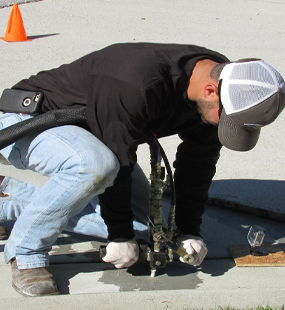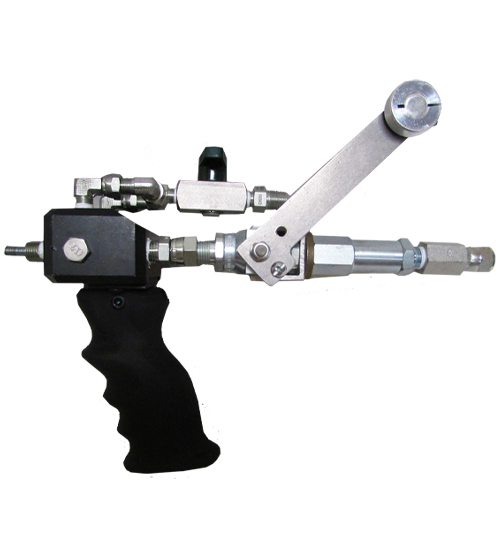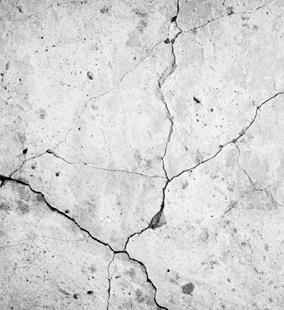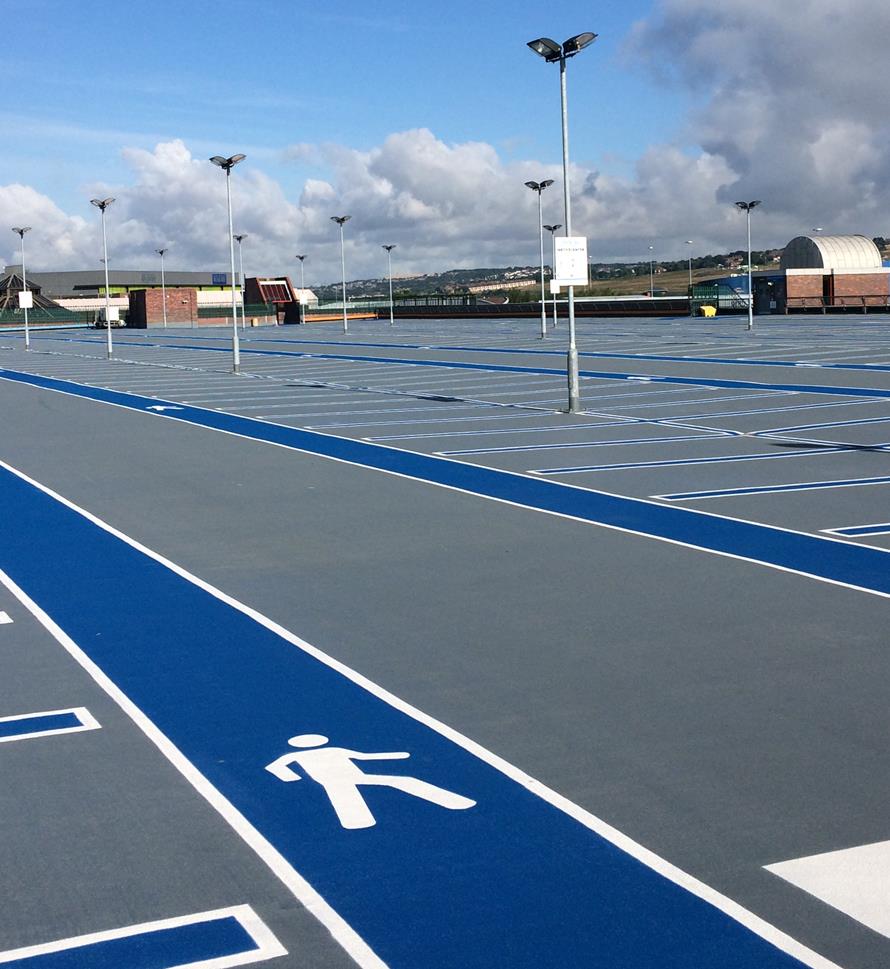
- Home
-
Solutions
-
Leak Seal
Seal leaks in concrete or masonry with crack injection and curtain grouting of our Prime Flex polyurethanes and AR acrylate resins. Prime Resins offers superior solutions for stopping leaks in every type of environment.
Read More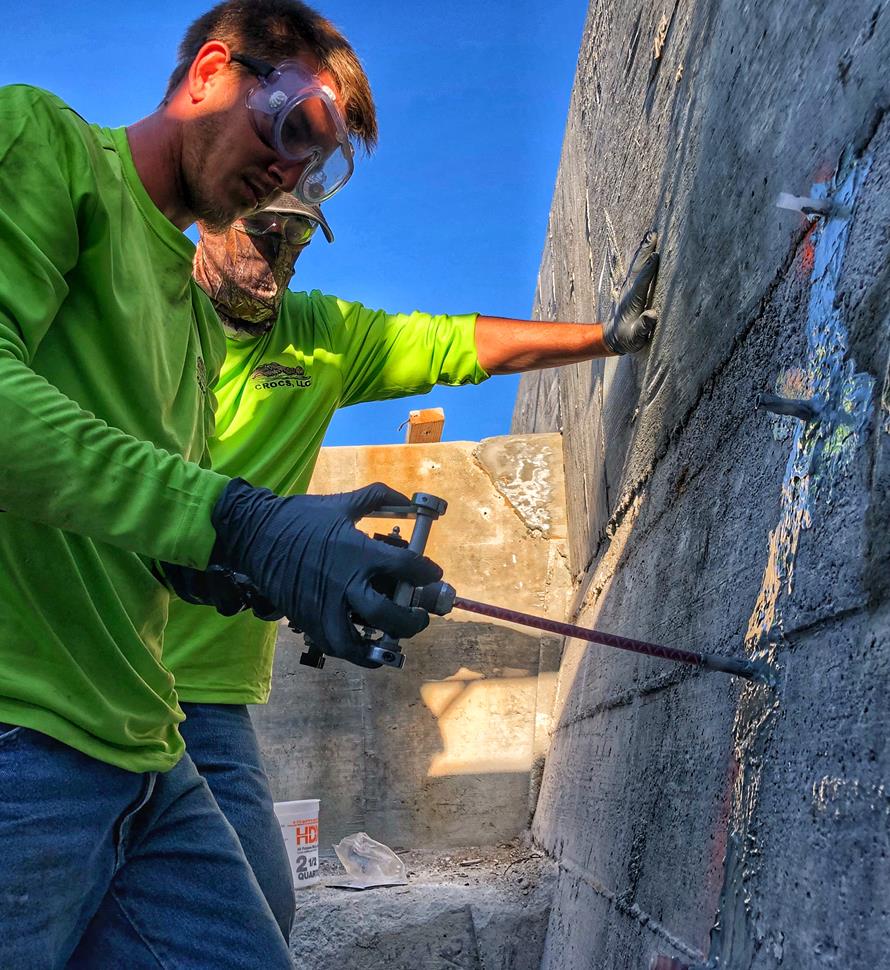
-
Soil Stabilization
Sound concrete relies on a sound substrate. Stabilize soils and fill voids with our polyurethane and acrylate foams and gels. We make chemical grouts for permeation and compaction grouting in wet and dry conditions.
Read More
-
Slab Lifting & Stabilization
Slab lifting and slab stabilization with polyurethane foams offers many advantages over traditional mudjacking. Only Precision Lift is engineered to tackle underlying issues and slab lifting with precise, dependable results.
Read More
-
Floor Repair & Joint Protection
Spalled concrete is concrete that is chipped, cracked and deteriorating. This often happens at a joint.
Read More
-
Seawall Repair
You can repair a seawall or bulkhead with Prime Resins chemical grouts: fill voids, stabilize loose soil and seal leaks at a fraction of the cost of wall replacement.
Read More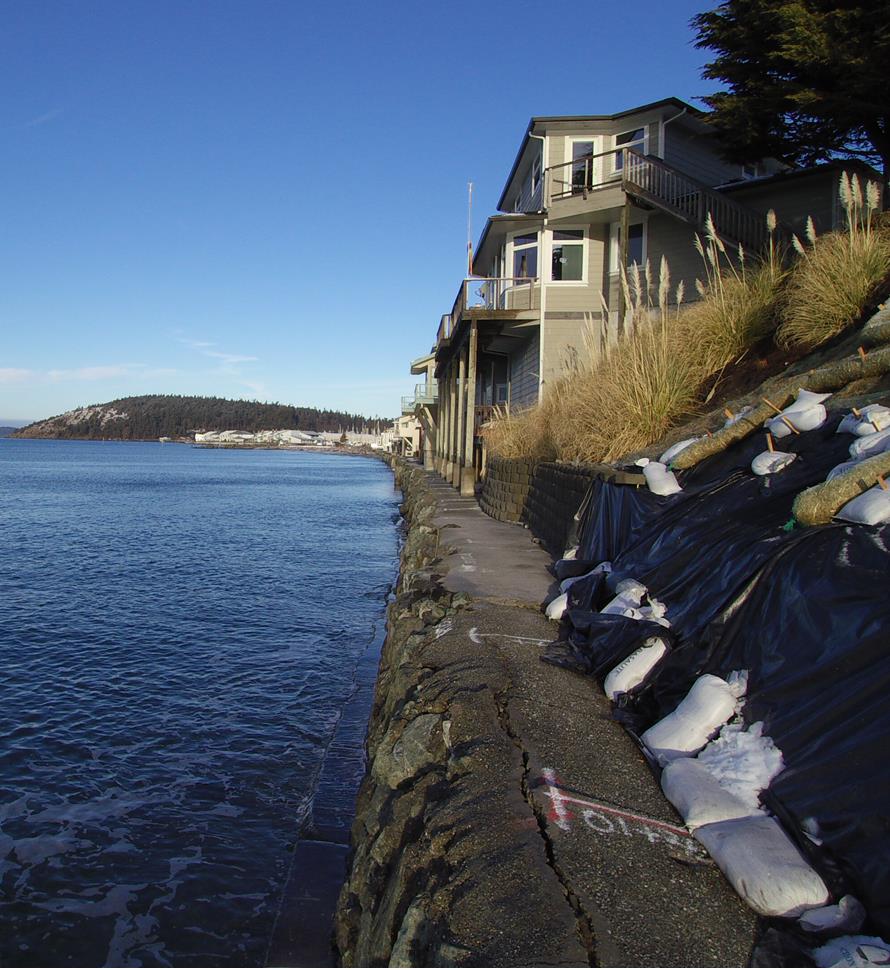
-
Structural Repair / Bonding & Anchoring
The need for crack repair in concrete structures can be caused by many different factors. Damage can occur to the concrete in situations where direct impact puts stress on one area of the structure.
Read More
-
Highway & Bridge
The geotechnical needs of DOTs and other agencies responsible for roads and bridges are vast. Issues include: Culvert repair Soil stabilization Void filling Concrete slab lifting Sinkhole remediation Slope control Slough control in tunneling
Read More
-
Waterproofing & Secondary Containment
Protecting concrete usually means shielding it from the elements of nature or from harsh manmade chemicals. But it’s not just concrete that needs such protection. Corrugated metal pipe, steel surfaces, material hoppers, rail cars and masonry all can come in contact with corrosive or abrasive materials or harsh conditions.
Read More
-
Leak Seal
-
Products
-
Leak Repair
- AR 800
- Conduit Seal Kit
- PR10L ACLM
- Soakum Oakum Kit
- Prime Flex 900 XLV
- Prime Flex 910
- Prime Flex 920
- Prime Flex 940
- Prime Flex 985 LX10
- Prime Flex 985 LX20
- Prime Flex 985 5.0
- Prime Flex 985 5.0 Fast
- Prime Flex Hydro Gel™ SX
- Prime Plug 1, 2 & 3
- PrimeCem MSM
- PrimeCem CAM
- PR10 ACLM (granular)
- Prime Flex Hydro Gel™ EXP
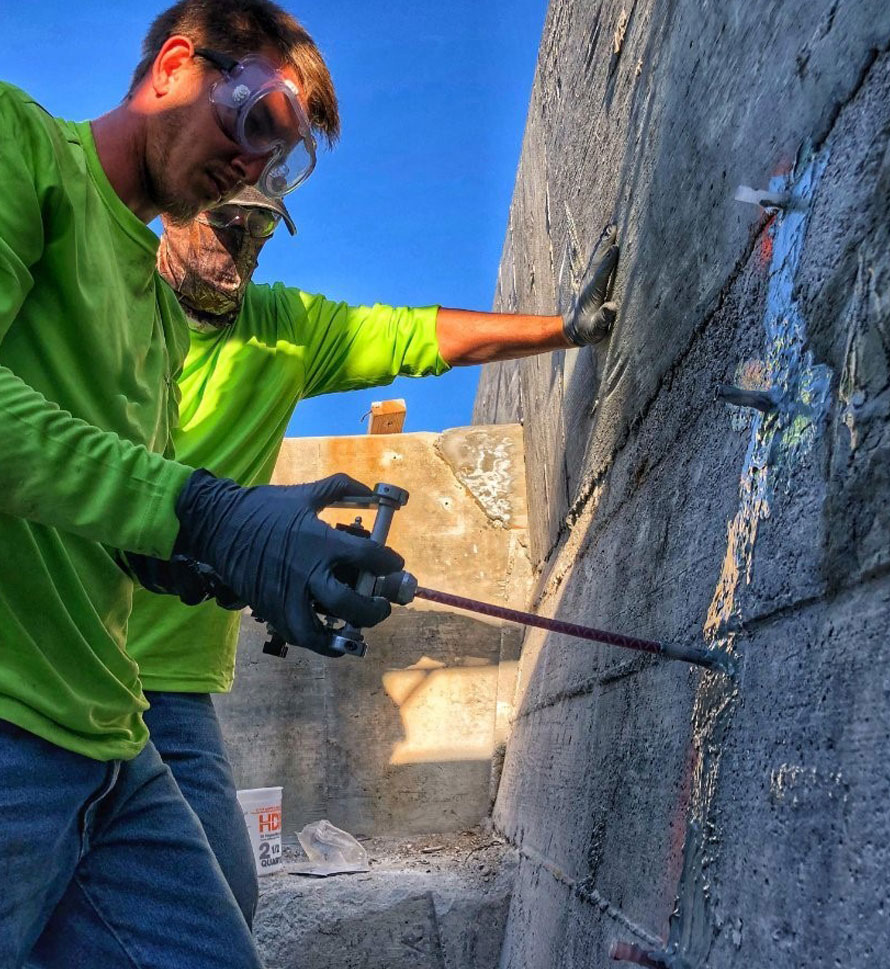
-
Soil Improvement
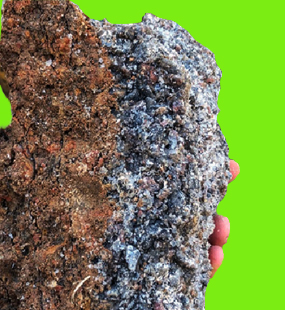
- Soil Stabilization
- Slab Lifting
- Structural Repair / Bonding & Anchoring
- Pumps
- Dispense Guns & Applicators
-
Turnkey Trailer Rig
Are you ready to hit the ground running doing concrete leveling with polyurethane foam? Prime Resins offers the industry’s best suite of products for lifting concrete as a turnkey, fully equipped trailer rig.
Read More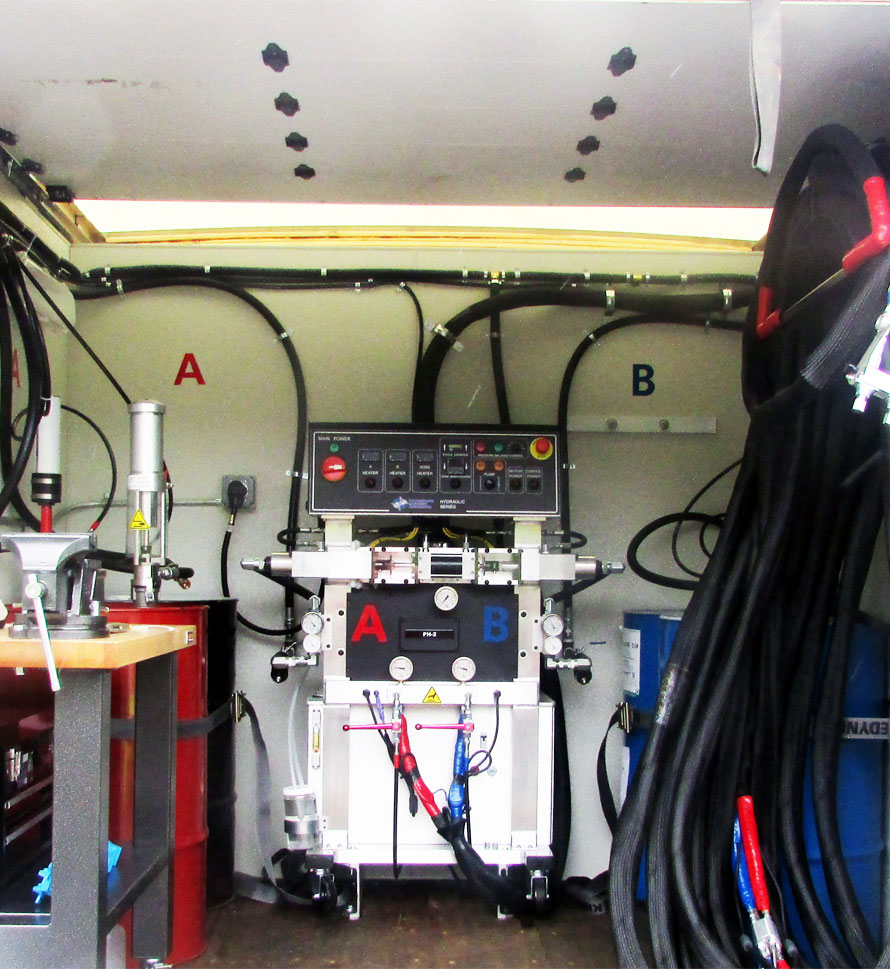
-
Accessories (General)
- 3/4" expendable drive point
- 3/8" and 3/4" soil probes
- Cartridge / Port Connectors and Mixers
- Conduit Seal Kit
- Eco Flush
- F Valve
- Flush Wand
- Grout Needle Kit
- High Pressure Control Valve
- High Pressure Mechanical Ports
- Kick Fast
- Low Pressure Plastic Ports
- PR11 TEA (used w/ PR10 ACLM)
- PR12 APSF catalyst (used w/ PR10 ACLM)
- PR17 LYTX
- Prime Kat
- Prime Plug
- Prime Solvent CGC
- Oakum
- Soil pipe jack
- Stainless Steel Grout Needle & Kit
- StainShield
- Wall Stinger Nozzle
-
Soil Grouting Accessories
- Pipe Coupler
- Pipe Coupler Ferrule
- Buttonhead Coupler - Straight
- Buttonhead Fittings
- SG 3/4" Expendable Drive Tip
- SG 3/4 Rod - 39" Base
- SG 3/4 Rod - 39" Connector
- SG 3/4 Rod - 19.5" Base
- SG 3/4 Rod - 19.5" Connector
- SG 3/4 Fitting - Pipe to Buttonhead
- SG 3/4 Fitting - Buttonhead Fitting
- IL 1/2" Drive Point
- IL 1/2" rod - 39" base
- IL 1/2" rod - 39" connector
- IL 1/2" Fitting Buttonhead
- SG 3/4" Fitting - Buttonhead Coupler
- SG 3/4" Slotted Drive Tip
- SG 3/4 Drive Head
- Modified Pipe Jack Soil Grouting
- SG 3/4 Fitting - Buttonhead Coupler
- Pagani DPM30 Penetrometer
- IL 1/2" Fitting - Buttonhead to Connector Rod
- IL 1/2" Rod to Rod Coupler Fitting
- High Pressure Flow Control Valve
- Buttonhead Coupler - 90°
- Buttonhead Clamp Kit
- DPM30 Penetrometers
- JackJaw Soil Probe Extractor
- Floor & Joint Repair
- Waterproofing & Secondary Containment
-
Leak Repair
- News
- Downloads
-
Tools
-
Case Studies
Prime Resins takes pride in its ability to find the right solutions to the problems facing our customers. Here are some examples of customers’ successful jobs:
Read More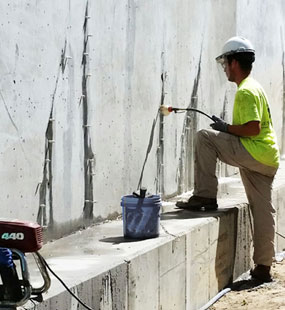
-
Prime Practices
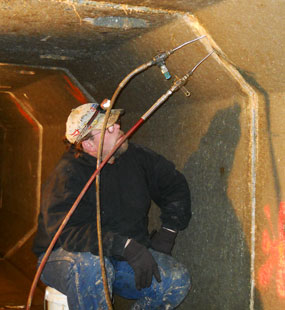
-
Videos

-
Estimating Tools & Info.

-
Why us?
The superior quality of products at a fair price, our consultative approach, and our unparalleled technical support set Prime Resins apart. Learn more about the Prime difference.
Read More
-
Product Types & Typical Uses
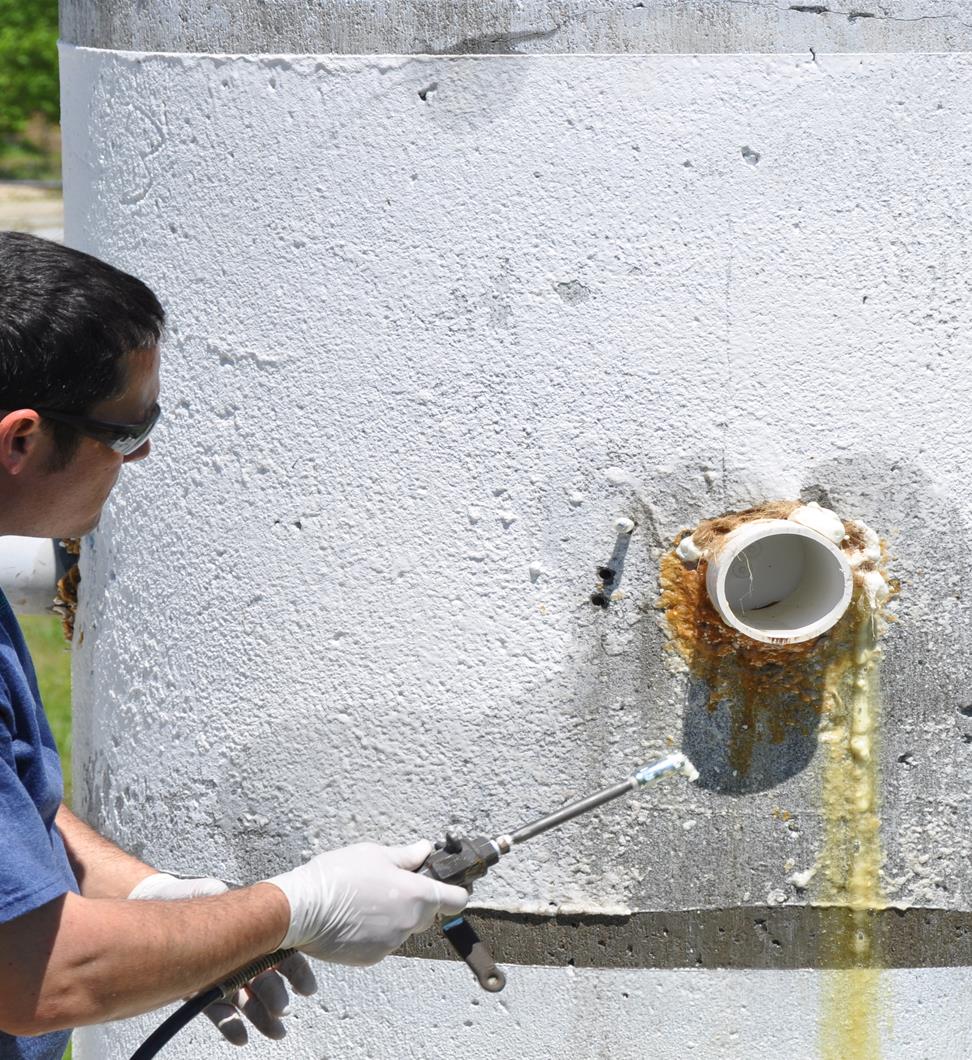
-
Looking for a contractor?
-
Certifications
-
Case Studies
- Contact
Case Studies- Soil Stab & Void Fill Pages
Curtain Grouting the Georgetown Lighthouse
Client: U.S. Coast Guard
Contractor: Brantley Construction, Charleston, S.C.
A brick and stucco lighthouse, built in 1812, stands on the southern point of North Island, a 30-minute boat ride off the coast of Georgetown, S.C. After nearly two centuries of service, the Georgetown Lighthouse continues to be an important navigation aid for the shrimp boats and pleasure craft that travel out of Winyah Bay through the narrow channel between North Island and South Island. Despite many years of assault by sea air, wind, and rain, the historic lighthouse is in remarkably good condition.

Problem
During a routine inspection in preparation for repainting, the Coast Guard found a few exterior cracks, areas of delaminated stucco and a handrail that needed to be replaced. They also identified a more serious condition that needed immediate attention. The brick and mortar foundation showed signs of deterioration caused by constant contact with salt water in the surrounding soil. Apparently, during storms, rain and salt spray would pelt the lighthouse and run down the sides, permeate the sandy topsoil and accumulate next to the foundation.
Solution
To stop the deterioration of the foundation, the Coast Guard engineers specified a technique called “curtain wall grouting.” This involves injecting a polyurethane grout completely around the structure to create a waterproof barrier. The specifications for this project called for injecting Prime Flex 910 through soil probes driven 30 inches into the ground, spaced 30 inches apart.
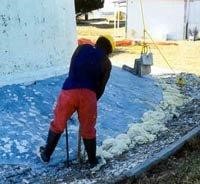
The Coast Guard contracted Brantley Construction Company of Charleston to repair and repaint the lighthouse. General Materials, Inc. in Charleston supplied the necessary repair materials.
Prime Resins provided onsite technical installation assistance. When injection started, the Prime Resins rep noticed that the specified 30-inch depth for the soil probes was too shallow to allow sufficient horizontal migration of the grout. Most of the grout was following the path of least resistance upward through the drier sand, and alongside the probe pipe. It also became apparent that the specified distance between the probes was too great for the grout to migrate to the grout from the previous probe. To ensure a good watertight curtain, the rep recommended changing the depth to five-and-a-half feet and the distance between probes to 18 inches.
To stop the grout from flowing back up alongside the probe pipe, he suggested that at each new probe the crew start by injecting a small amount of Prime Flex 910 with 5% catalyst and then waiting about 90 seconds. The grout traveled up a short distance alongside the probe, cured and created a gasket around the pipe. When they resumed injection, this gasket forced the rest of the grout to migrate outward into the surrounding soil. To ensure complete protection, the rep recommended that they repeat the process with the injection probes midway between the first set of probes.
General Materials supplied Prime Bond 3100 and Prime Gel 2000 to complete the other repairs. These products were used to repair the cracks and reattach the delaminated stucco.




